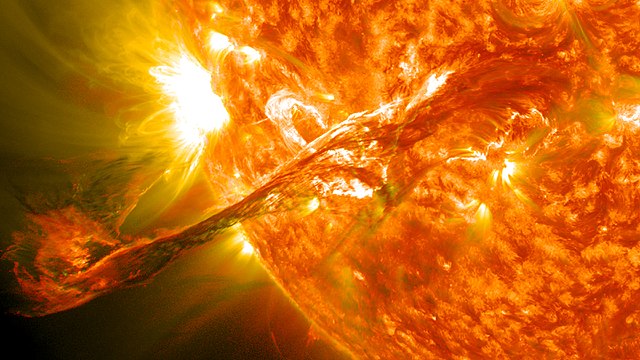A coronal mass ejection (CME) is a significant ejection of magnetic field and accompanying plasma mass from the Sun's corona into the heliosphere. CMEs are often associated with solar flares and other forms of solar activity, but a broadly accepted theoretical understanding of these relationships has not been established.
Photo from the ISS of aurora australis during a geomagnetic storm on 29 May 2010. The storm was most likely caused by a CME that had erupted from the Sun on 24 May 2010, five days prior to the storm.
A corona is the outermost layer of a star's atmosphere. It is a hot but relatively dim region of plasma populated by intermittent coronal structures known as solar prominences or filaments.
The solar corona with its coronal streamers streaching out, as well as solar prominences (in red) along the limb of the earthshine illuminated Moon during a total solar eclipse.
Image from TRACE at 171Å wavelength (extreme ultraviolet) showing coronal loops
Image taken by the Solar Dynamics Observatory on October 16, 2010. A very long filament cavity is visible across the Sun's southern hemisphere.
On August 31, 2012, a long filament of solar material that had been hovering in the Sun's outer atmosphere, the corona, erupted at 4:36 p.m. EDT





